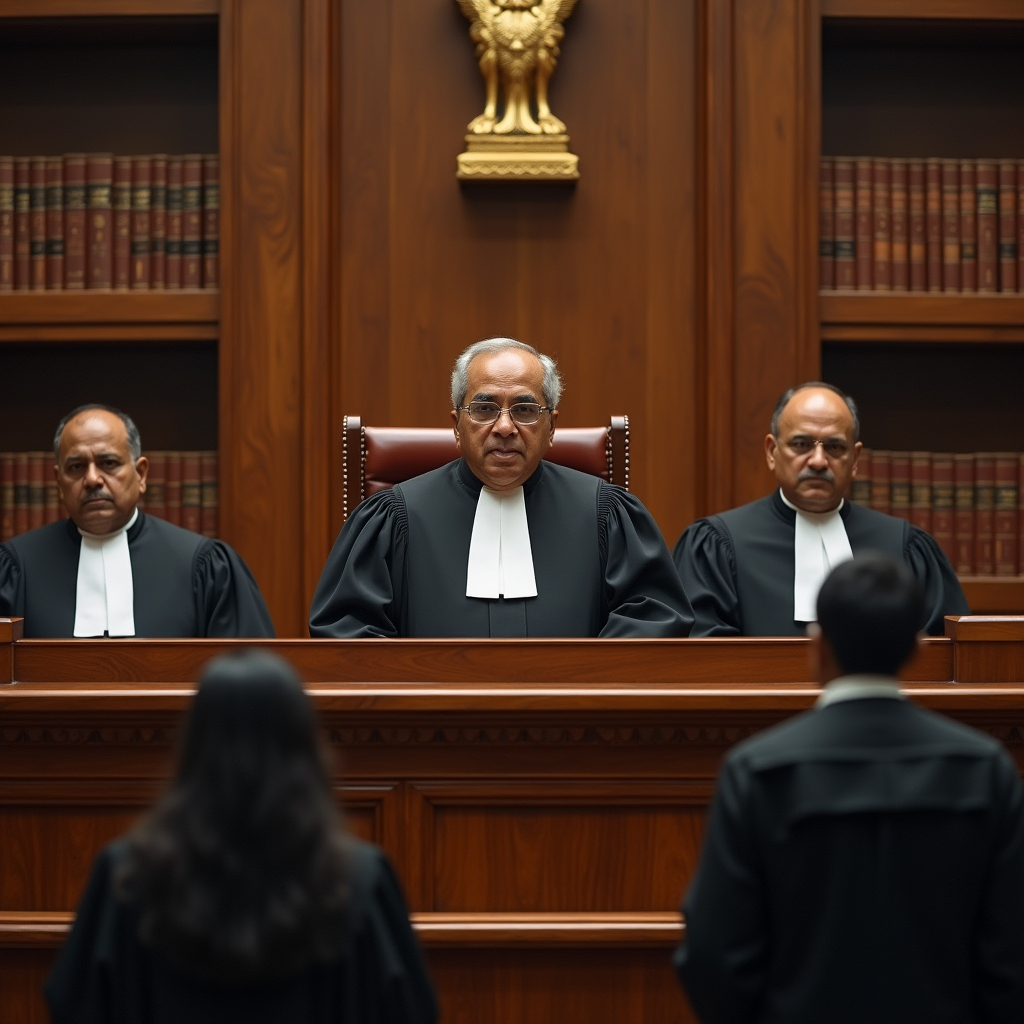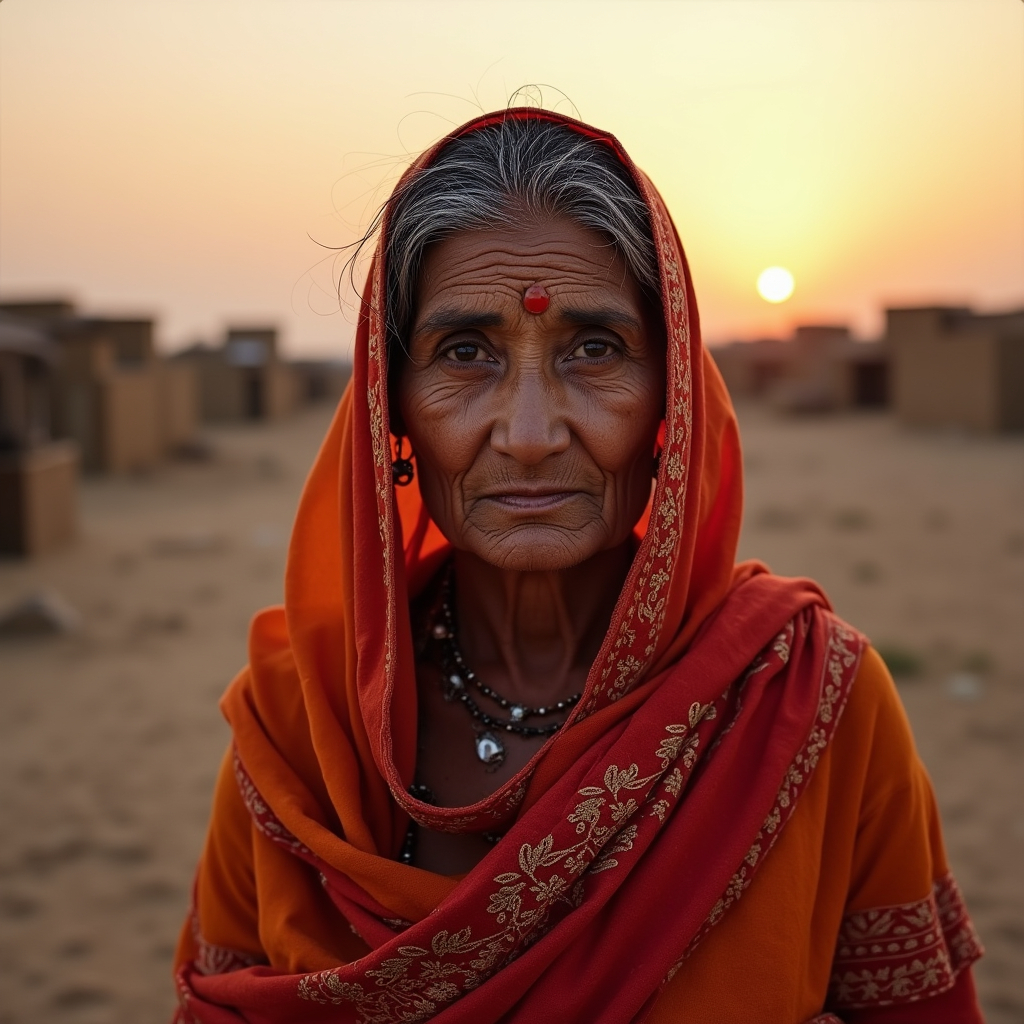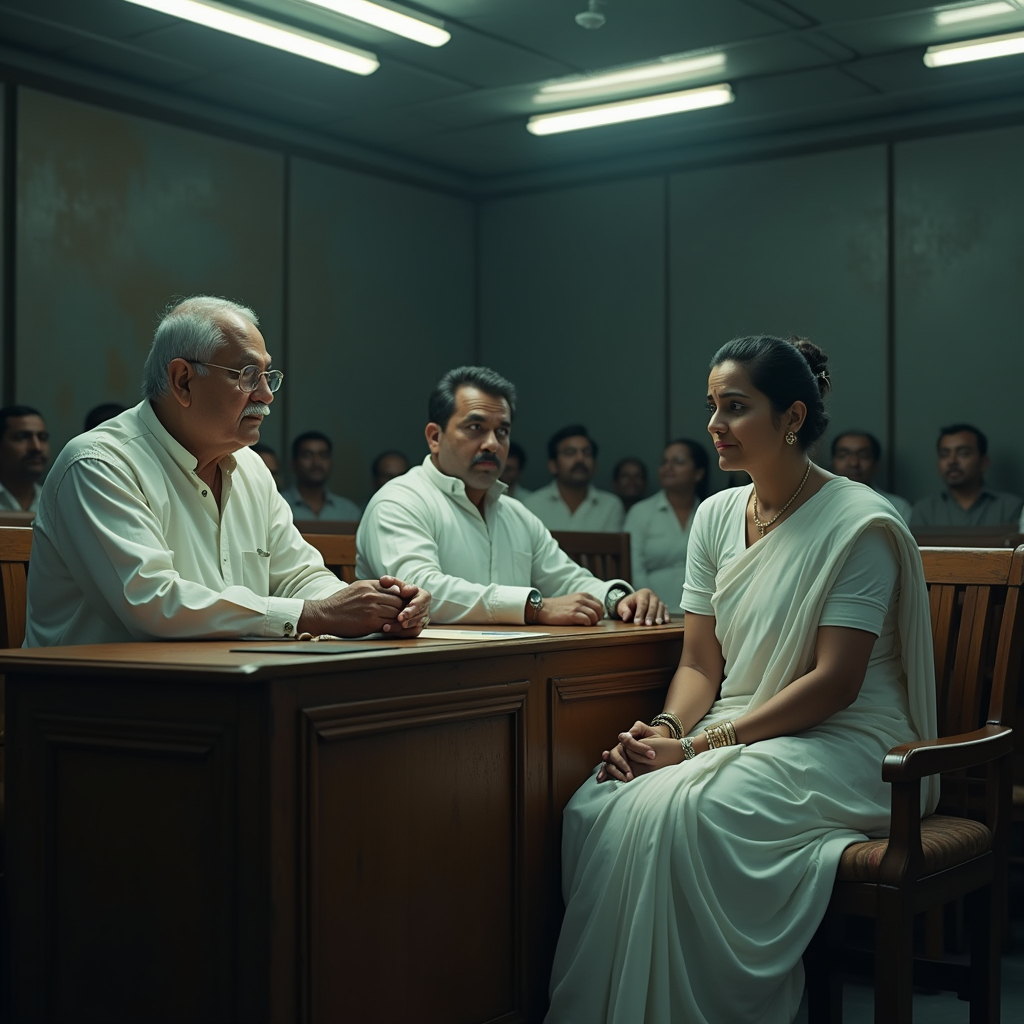This article is written by Sai Gayatri and further updated by Jyotika Saroha. The article deals with the detailed analysis of Vishaka & Ors. v. State of Rajasthan & Ors. (1997). It elucidates the factual background, issues, contentions by the parties, judgement and guidelines laid down in the said case. It further deals with the aftereffects of the judgment and about the Sexual Harassment of Women at Workplace Act, 2013.
Table of Contents
Introduction
Mahatma Gandhi once said – “The day a woman can walk freely on the roads at night, that day we can say that India has achieved independence.”
So, did India really achieve independence? I guess not. It has been seven decades since Mahatma Gandhi spoke the above words, and they still make sense when compared to the present-day scenario of women being subjected to sexual harassment, rape, gender discrimination, domestic abuse, eve-teasing, and so on in our country. It is a fact that India has been ranked ninth among the world’s most dangerous countries for women in the year 2024. This shows that even today, India has not achieved much in terms of women empowerment and their safety. According to the Convention on Elimination of all forms of discrimination, 1949, sexual harassment is an unwelcoming behaviour towards a women which includes sexually coloured remarks, physical contact, unnecessary touching, showing vulgar images, asking for sexual favours, etc. The sexual harassment against women violates their fundamental rights that have been provided under the Part III of the Indian Constitution within Articles 14 and 21 i.e., the right to equality and the right to live with dignity respectively.
In the year 1992, a woman named Bhanwari Devi raised her voice against an illegal and immoral act that was about to happen at her workplace was mercilessly gang-raped by five men. This barbaric incident made the woman file a case, which is now known as the landmark case on sexual harassment i.e., Vishaka and Ors. vs State of Rajasthan and Ors. (1997). The Supreme Court, while dealing with the above case, dealt with the issue of sexual harassment of a woman at the workplace and formulated a set of guidelines in order to establish suitable mechanisms to take charge upon such matters both at the public as well as private levels. This case is considered a victory for all the women of India. Let’s dig into the details of the case to learn more about how the law regarding the safety of women against sexual harassment evolved in India in the past two decades.
Background of the case
Vishaka is a Non-Governmental Organisation (NGO) in the state of Rajasthan which works for the upliftment and welfare of the women. A lady named Bhanwari Devi was working as a community worker in order to promote women empowerment and their safety by organising various campaigns against child marriage and dowry. In the year 1992, when she was stopping a child marriage that was happening in a family, she was brutally gangraped by a group of men belonging to the village in Rajasthan. The case went to the lower court and the learned court acquitted the accused persons on the basis of lack of proper evidence. Aggrieved by the judgement, a group of women led by Naina Kapur and Sakshi filed a Public Interest Litigation (PIL) under Article 32 of the Indian Constitution before the Hon’ble Supreme Court against the State of Rajasthan for seeking the appropriate remedy. The said PIL was filed in order to put forward the unnoticed issue of sexual harassment that was being witnessed by the women at the workplace.
Details of the case
Name of the case – Vishaka & Ors. v. State Of Rajasthan & Ors.
Citation of the case- (1997) 6 SCC 241
Name of the court where the case was filed- Hon’ble Supreme Court of india
Petitioners in the case- Vishaka and ors.
Respondents in the case- The State of Rajasthan and Ors.
Hon’ble bench- Chief Justice J.S. Verma, Justice Sujata V. Manohar, and Justice B.N. Kirpal.
Judgment passed on- 13th August, 1997
Major details of the case: a quick overview
In the present case, the Supreme Court looked into the various aspects of discrimination and violence that happens against women. The court in Vishaka’s case laid down a set of guidelines that need to be followed by the courts while dealing with such cases. The Central Government also agreed upon implementing the said guidelines and bringing policies for the betterment and welfare of women in every sphere so that they can feel safe. The Supreme Court observed that sexual harassment against women infringes against the rights laid down under Article 14, 19 and 21 of Indian Constitution.

Major laws discussed under the case
The major laws discussed in the said case are as follows:
Constitution of India
Article 14: Right to equality
It provides that the state shall not refuse the citizens ‘equality before law’ and the ‘equal protection of laws’ within the territory of India. ‘Equality before law’ or the ‘rule of law’ is a British concept brought up by A.V. Dicey that implies that no one is above the law. On the other hand, equal protection of laws is taken from the American Constitution and is a positive concept that implies that the same law shall be applied to everyone who is similarly situated.
Article 15: Prohibition of discrimination
This article states that the state is under obligation to not discriminate amongst its citizens on the basis of certain factors that may involve religion, race, caste, sex, or place of birth. It further provides that no citizen shall be discriminated against on grounds of religion, race, caste, sex or place of birth with respect to access to shops, restaurants, hotels, wells, tanks, roads, bathing ghats, etc. This article provides for exceptions to clause (1) and (2) in clause (3), which provides for special provisions for the betterment of women and children.
Article 19(1)(g): Right to practise any profession, or to carry on any occupation.
This article provides for the right to take any profession, or to carry on any occupation, trade or business. However, it is truly stated that freedom comes with certain restrictions. This right is also not absolute and there are certain reasonable restrictions imposed upon this right in the interest of public morality and order.
Article 21: Right to life and personal liberty
This article provides that every person shall have the right to life and personal liberty. This article is considered as the heart of the Indian Constitution. This article has been interpreted widely by the Supreme Court and has included the right to education, the right to a healthy environment, the right to sleep etc.
Convention on the Elimination of all forms of Discrimination Against Women, 1949 (CEDAW)
Article 11
Article 11 of the CEDAW mentions that the state shall take appropriate measures in order to eliminate discrimination against women and work towards their upliftment in every form in the field of employment.
Facts of Vishaka & Ors. vs. State of Rajasthan & Ors. (1997)
Bhanwari Devi, a woman belonging to Bhateri, Rajasthan started working under the Women’s Development Project (WDP) run by the Government of Rajasthan, in the year 1985. She was employed as a ‘Saathin’, which means ‘friend’ in Hindi.
In the year 1987, as a part of her job, Bhanwari took up an issue of attempted rape of a woman who hailed from a neighbouring village. For this act, she gained full support from the members of her village. In the year 1992, Bhanwari took up another issue based on the government’s campaign against child marriage. This campaign was subjected to disapproval and ignorance by all the members of the village, even though they were aware of the fact that child marriage is illegal.
In the meantime, the family of Ram Karan Gurjar had made arrangements to perform such a marriage, for his infant daughter. Bhanwari, abiding by the work assigned to her, tried to persuade the family to not perform the marriage, but all her attempts resulted in being futile. The family decided to go ahead with the marriage.
On 5th May 1992, the Sub-Divisional Officer (SDO) along with the Deputy Superintendent of Police (DSP) went and stopped the said marriage. However, the marriage was performed the next day and no police action was taken against it. Later, it was established by the villagers that the police visits were a result of Bhanwari Devi’s actions. This led to boycotting Bhanwari Devi and her family. Bhanwari also lost her job amid this boycott.
On 22nd September 1992, to seek vengeance, five men, i.e., four from the above-mentioned family- Ram Sukh Gujjar, Gyarsa Gujjar, Ram Karan Gujjar, and Badri Gujjar along with one Shravan Sharma, attacked Bhanwari Devi’s husband and later brutally gang-raped her.

The police had tried all possible ways to avoid filing any complaint against the accused which resulted in a delayed investigation. When Bhanwari Devi tried to seek justice, she was severely criticised for her actions, faced various hurdles, and was pressured by the concerned authorities to drop her case. Even after facing so much criticism, Bhanwari Devi, with her incessant determination to get justice, managed to lodge a complaint. The medical examination was delayed by fifty-two hours. However, the examiner did not mention any commission of rape in the report but rather mentioned the age of the victim.
Bhanwari Devi and her husband approached the trial court in a district of Rajasthan, but in the absence of sufficient evidence and with the help of the local MLA, Dhanraj Meena, all the accused managed to get an acquittal in the trial court. The trial court refused to believe the statement that Bhanwari Devi’s husband was stopped while she was being raped by the said men, and he did not help her. But this acquittal resulted in a huge backlash from many female activists and organisations that supported Bhanwari. These organisations came together and raised their voices to attain justice, which resulted in the filing of a PIL. Aggrieved by the said decision of the trial court, PIL was filed by a women’s rights group known as ‘Vishaka’. It laid its focus on the enforcement of the fundamental rights of women at the workplace under the provisions of Articles 14, 15, 19, and 21 of the Constitution of India, it also raised the issue of the need for the protection of women from sexual harassment at the workplace.
Issues raised in the case
- Whether the decision given by the trial Court in the said case is violative of Bhanwari Devi’s fundamental rights guaranteed to her within Article 14, 15, 19(1)(g) and 21?
- Whether the court could apply international laws in the absence of applicable measures under the existing?
- Whether the employer has any responsibility when sexual harassment is done to/by its employees?
Arguments of the parties
Petitioners arguments
A writ petition, seeking the writ of mandamus was filed by the ‘Vishaka’ group, which comprised various women’s rights activists, NGOs, and other social activists.
Infringement of Fundamental rights
The petitioners contended that the indecent acts of sexual harassment of women at Workplace violate the fundamental rights enshrined under Article14, 15, 19(1)(g) and 21 of the Constitution of India. The petitioners brought the attention of the Hon’ble Court to the loophole that the legislation has regarding the provision of a safe working environment for women. They requested the Hon’ble Court to frame guidelines for preventing sexual harassment at the workplace.
No specific legislation regarding sexual harassment at the workplace
The petitioners further contended that there is no specific legislation on the said issue for the protection of women from sexual harassment at the workplace and this led to an unsafe environment for them, which makes it more challenging for the women to do jobs. It also hinders the process of living a meaningful life.
Role of International Conventions
It was argued that, as India has also ratified to the Convention on the Elimination on all forms of Discrimination Against Women, 1949 (CEDAW) it is the obligation of the government to implement laws that can eradicate the gender discrimination and acts of sexual harassment at the workplace committed against women.
Duty of the judiciary
The petitioners further contended that it becomes the duty or obligation of the Court to implement rules and regulations that can help in eradicating such crimes when there is no specific legislation dealing with the said issue.
Therefore, the petitioners strongly argued before the Hon’ble Supreme Court in order to address such unavoidable issues of sexual harassment at the workplace that happen with women and about which no one wanted to discuss. The petitioners stated that Bhanwari Devi is not the single lady who has suffered from this; there are many of them, but due to the societal pressure and fear of being stigmatised, people do not file complaints against such crimes. The petitioners also relied upon the case of the Minister of immigration and Ethnic Affairs v. Teor (1995), it was held that where there is a lacuna in the law or the law is silent on a particular issue, then the Court can rely upon the international convention subject to which they should not be inconsistent with the fundamental rights enshrined under Part III of the Constitution to the citizens of India. The petitioners urged the Supreme Court to safeguard and protect the interests of women in order to promote their contribution towards the country’s growth.

Respondent’s arguments
The learned Solicitor General, appearing on behalf of the respondents (with their consent) in this case, did something unusual, i.e., supported the petitioners. The respondent assisted the Hon’ble Court in figuring out an effective method to curb sexual harassment and in structuring the guidelines for the prevention of the same. Fali S. Nariman – the amicus curiae of the Hon’ble Court, along with Ms. Naina Kapur and Ms. Meenakshi provided assistance to the Hon’ble Court in dealing with the said case. The respondents suggested that the states should mention the information in their reports about sexual harassment and necessary measures to protect women from such acts and from other kind of violence that happens at workplace.
Judgement in Vishaka & Ors. vs. State of Rajasthan & Ors. (1997)
The lack of a law that would prevent sexual harassment and provide women with a safe working environment was acknowledged by the Hon’ble Supreme Court of India. Section 354 and 354A of the Indian Penal Code, 1860, were to be referred in any case of sexual harassment but these provisions were not specific to the issue at hand. This made the Hon’ble Court realise the need for proper and effective legislation that would deal with sexual harassment.
Sexual harassment: violation of gender equality rights and right to life and liberty
The Court, while dealing with the first issue, stated that such acts of sexual harassment are a gross infringement of the rights of gender equality and the right of life and liberty as has been laid down in Articles 14, 15 and 21 of the Indian Constitution. The act of sexual harassment is generally a gender-based crime against women, hence, it is a violation of gender equality rights mentioned under the said provisions of the Indian Constitution. Article 21 has a wide connotation, and it includes the right to a safe working environment and the right to live with dignity, such acts affect the mental sanity and respect of women hence it is a violation of Article 21 as well. It also violates the right to practise or carry on any profession or to carry any occupation, trade, or business given under Article 19(1)(g) of the Indian Constitution. The violation of such rights allows the victim to approach the Hon’ble Supreme Court under Article 32 of the Indian Constitution to seek a remedy for the purpose of enforcing her fundamental rights guaranteed under Part III of the Indian Constitution. The right given under Article 19(1)(g) of the Indian Constitution provides that it depends upon a safe working environment. The right to life and liberty refers to the right to live life with dignity and for ensuring the said purpose, suitable and efficient legislation should be implemented by the legislature.
Application of international conventions when there are no existing measures
The Supreme Court, while dealing with the second issue, stated that in the absence of any existing measures to deal with the serious evil of sexual harassment, the international conventions can be relied upon by the courts for the purpose of interpreting the guarantee of gender equality. The international conventions that are in consonance with the fundamental rights and the Constitution may be relied upon for the purpose of safeguarding the rights guaranteed to the citizens, as enshrined under Article 51(c) of the Indian Constitution as in the Directive Principles of State Policy. The concept of gender equality also contains the protection from sexual harassment within its purview and the right to do a job or work with dignity. The international conventions are of utmost importance in order to achieve the said purpose.
The Hon’ble Court took reference from the international conventions to proceed with the case. It referred to the Beijing Statement of Principles on the independence of the Judiciary in the LAWASIA region, to function as a guardian of citizens’ rights and independently make laws in the absence of any legislative framework. Then the Hon’ble court took reference from the provisions of CEDAW. They were-
Article 11(1)(a) & (f)– which states that the State takes all appropriate measures to eliminate discrimination against women in the field of employment,
Article 24– which states that the State shall undertake to adopt all necessary measures at the national level aimed at achieving the full realisation.
The general recommendations of CEDAW, 1949 laid down in Articles 11, 22, 23 and 24. Under Article 11, the sexual harassment includes unwelcoming sexual behaviour, sexually coloured remarks, physical contact, etc.
The Government of India also made an official statement at the World Conference held in Beijing, China, to establish a National Commission in every sector for the safeguarding and promoting the rights of women.
Responsibility of the employer

The Supreme Court, while dealing with the third and last issue, stated that it is the duty of employers to take all necessary measures to prevent such incidents of sexual harassment from happening.The organisations should have proper procedures and forums to deal with such issues and dispose them off effectively.
The Hon’ble Supreme Court framed the guidelines to prevent sexual harassment at the Workplace, known as Vishaka Guidelines, that were to be treated as law declared under Article 141 of the Indian Constitution. These guidelines were the foundation for The Sexual Harassment of Women at Workplace (Prevention, Prohibition and Redressal) Act, 2013.
Aftermath of Vishaka & Ors. vs. State of Rajasthan & Ors. (1997)
The case of Vishaka v. State of Rajasthan (1997) is a significant ruling wherein the Supreme Court implemented various guidelines in order to protect the women from the acts of sexual harassment that happen at the workplace. It is considered as a milestone case pronounced by the Supreme Court of India as it paved the way for the implementation of the Sexual Harassment of Women at Workplace (Prevention, Prohibition and Redressal), Act, 2013, which is the first legislation that deals with the protection of women from sexual harassment at the workplace. This case has helped many women seek justice against the acts of sexual harassment faced by them at their workplace. There are various reasons due to which women do not file complaints against such acts; they may include the fear of social stigma, male dominance, etc. Acts like these can have a long lasting impact on the minds of victims, which may later result in depression and suicidal tendencies. Many women like Bhanwari Devi who were denied justice, with the implementation of Vishaka guidelines, were helped to protect their rights.
Importance of Vishaka case
Due to this milestone ruling based on the rights of women and the right to life and liberty, it has created a safe environment for women to work freely. The Court in the said case acknowledged the active participation of women at the workplace, as it is very much essential for the advancement of the country. It has empowered and strengthened the women to speak out against the acts of sexual harassment at workplace. This set of guidelines helps in raising awareness about the rights of women that need to be protected.
The Vishaka guidelines
The Supreme Court took regard to Section 2(d) of Protection of Human Rights Act, 1993 and opined that though India has no penal or civil law presently to deal with the issue of sexual harassment at the workplace and the making of such legislation will take a long time, it is compulsory for all the employers, institutions, and other responsible persons to follow certain guidelines in order to protect the women from the acts of sexual harassment.
Following are the guidelines laid down by the Court, which are also known as the Vishaka guidelines
- It is the duty of the employers and all the people responsible to prevent such acts from happening and to provide for a suitable procedure for conciliation, prosecution and all other necessary steps as may be required.
- The Court further provided a definition of sexual harassment, which states that it is an unwelcoming sexual behaviour, direct or by implication, and includes physical contact, sexually coloured remarks, sexual favours, showing pornographic content, and any verbal or non-verbal conduct of a sexual nature.
- Further, it provides for taking the preventive steps in order to avoid such mishappenings against any of the employees and it is applicable to all employers be it private or public.
- There should be a robust mechanism or a body to deal with such cases.
- Appropriate conditions of work must be provided to the employees, that includes the conditions of work, health facilities, etc and to make sure that there is no unsafe environment for women at the workplace.
- The employer shall take appropriate action by filing a complaint in accordance with the necessary provisions of the Indian Penal Code, 1860. The employer shall also ensure that the victims are not discriminated against or victimised while the complaints are in process.
- Employers should initiate disciplinary proceedings if such an act amounts to misconduct during the course of employment.
- An appropriate mechanism should be created at the organisation employers in order to take the redressal of such complaints in an effective manner.
- A complaints committee should be formed in order to deal with the complaints, and it should be headed by a woman. It shall report its annual conducts to the government.
- The employees should also be allowed to raise their voices against such issues of sexual harassment during their employer-employee meetings.
- There should be awareness about the rights of women, and the guidelines should be notified, particularly.
- A third party, like an NGO or an institution, should be involved in order to avoid the pressure from senior officials.
- Where the act of sexual harassment is committed by a third who is not a part of the organisation then the employer is required to take all necessary actions to help the victim.
These guidelines hold the utmost importance and were later converted into the above mentioned Act.

Sexual Harassment Of Women At Workplace (Prevention, Prohibition, Redressal) Act, 2013
The Act came into being after a decade of the implementation of Vishaka guidelines. It is also called as the Prevention of Sexual Harassment Act, 2013 (POSH) Act. The main objective behind the implementation of the Act is to promote gender equality and to provide for a safe working environment for all employees. The foundation of the Act lies within the Vishaka guidelines given by the Apex Court in the said case in order to curb the crimes of sexual harassment.
Sexual Harassment
It provides for the definition of sexual harassment under Section 2(n) of the Act. It is an unwelcoming act of sexual behaviour and includes physical contact, sexually coloured remarks, showing the pornographic content, using verbal or non-verbal words that depict a sexual nature and asking for sexual favours.
Internal complaints committee
The Act provides for the formation of an internal complaint committee by the employer under Section 4 of the Act. The internal complaint committee has the same powers as that of a civil court in summoning and examining any person. The presiding officer of the committee should always be a senior female employee.
Local complaints committee
The Act also provides for the constitution of the local complaints committee under Section 6. The establishment that has less than ten employees will fall under the jurisdiction of the local complaints committee. The said committee covers the unorganised sector workers.
Complaints of sexual harassment
Section 9 of the Act deals with the complaint of sexual harassment. It provides that an aggrieved woman may give her complaint in writing against the sexual harassment to the internal complaint committee or the local committee within a timeframe of 3 months from the date of the incident. In the proviso, it is given that if, due to some reason the complaint cannot be made in writing by the woman, then the presiding officer or the member of the internal committee shall provide her with the reasonable assistance to do so.
Conciliation
Section 10 deals with the process of conciliation. Before starting the inquiry against the accused person, if the woman has made a request to the internal committee or the local committee, it may take necessary steps to settle the matter between them through the process of conciliation. If the settlement is made, then no further inquiry shall be conducted.
Inquiry into complaint
Section 11 deals with the inquiry into the complaint, which states that the internal committee or the local committee as the case may proceed to make an inquiry into the complaint if a prima facie case exists, and further within a period of 7 days, it shall forward the complaint to the police for registration of the said case within Section 509 of theIndian Penal Code, 1860 or any other provision that is applicable thereto. It further provides that if the respondent has not adhered with the terms of settlement as per the requirement of Section 10, then the aggrieved woman may inform the internal committee or the local committee, as the case may be, and they shall proceed with the inquiry into the said section.
Punishment for false and malicious complaint
Section 14 deals with the false or malicious complaints, it provides that if any woman or any other person files any false or baseless complaints about which they are aware to be false, malicious or misleading, the internal committee or the local committee may direct the employer to take appropriate action against that woman or person.
Determination of compensation
Section 15 deals with the provisions with respect to the determination of compensation, which provide for the amount that needs to be given to the aggrieved woman, the following factors shall be taken into account:
- The mental trauma or the emotional pain suffered by the woman
- Lost opportunities in the career
- The medical cost that has been incurred by her during her physical or psychological treatment.
- The financial status of the respondent
Prohibition of publication of the contents
Section 16 of the Act deals with the prohibition upon the publication or disclosure of the identity of an aggrieved woman and states that the identity and address of the aggrieved woman including the identity of the respondent and witnesses, and action taken against the respondent by the employer shall not be published or communicated to the media or public.

Duties of employer
Section 19 of the Act deals with the duties of the employer, which are as follows:
- It is the duty of employer to provide a safe and healthy working environment to its employees
- To organise workshops and awareness programs in order to make people aware of the provisions of the said Act.
- To provide the internal or local committee with the necessary facilities in order to deal with the complaints in an effective manner.
- It is the duty of the employer to assist the internal committee or the local committee and ensure the attendance of respondents and witnesses before the said committees.
- It shall be the duty of the employer to provide necessary assistance to the aggrieved woman who wants to file a complaint under the Indian Penal Code, 1860 or under any other law.
- It is the duty of an employer to treat the act of sexual harassment as a misconduct under service rules.
- It shall be the duty of the employer to take notice of the reports submitted by the internal committee.
Critical analysis of Vishaka & Ors. vs. State of Rajasthan & Ors. (1997)
Through the Vishaka Case, the Hon’ble Supreme Court of India took a great step towards the empowerment of women by issuing guidelines to curb sexual harassment at the workplace. The Hon’ble Court took reference from various international conventions and laws in the absence of domestic law, then connected it to the law of the land and gave birth to a new law altogether. The efforts put in by the Indian judiciary in this particular case to safeguard women are commendable. The Hon’ble Court, through the Vishaka Guidelines, provided a strong legal platform for all the women to fight against sexual harassment boldly. The Vishaka case changed the outlook towards sexual harassment cases as serious issues, unlike in the past when such cases were looked upon as petty matters. Like every coin has its two sides, based on the Vishaka case, one can figure out that though India tried to overcome the social evils of gender inequality and sexual harassment by providing employment and provisions of law, it did not succeed in taking social responsibility for an equally safe working environment. Even after having the law on our side to safeguard women, there are many incidents of sexual harassment taking place regularly which go unreported. As a small example, let us assume that a woman finally gets her dream job in a software company. The woman is subjected to sexual harassment. She wants to go and lodge a complaint against the one who harassed her, but she chooses not to do it. She is worried that if she complains, then she might not be able to continue working in the company because her family members might stop her. Why? because their family fears that the woman has been harassed once, so she might be harassed again. The concern of people even today is that the females in their house must learn to adjust until they are in a “safe” environment according to their parameters. Not that the person who harassed her must be punished for what he has done and to see to it that he does not repeat it. Though there are remedies available under the law, for women facing sexual harassment at work, the “safety” is not assured even after so many years.
There is a need for various Guidelines and an Act just to safeguard women on the working front. Why is it so hard for a woman to achieve the same freedom and opportunities that a man gets with not much of an effort?
Conclusion

It can be concluded by saying that sexual harassment is a persistent issue and can affect the victim on a large scale if not redressed. In the above case, the constitutional principles of equality and liberty have been upheld by the Hon’ble Supreme Court of India in the Vishaka judgment. The inception of the law against sexual harassment has inspired many women to raise their voices against the suffering that they were silently subjected to until the year 1997. Vishaka Guidelines formed the basis for the establishment of The Sexual Harassment of Women at Workplace (Prevention, Prohibition and Redressal) Act, 2013. The true spirit of judicial activism has been portrayed in the Vishaka Judgement, and it has been an inspiration to other nations. However, Bhanwari Devi, the spark that ignited the need for appropriate legislation to safeguard women against sexual harassment, even after two decades, is still awaiting justice to be served. It is paramount to take note of the fact that, though such comprehensive laws have been enacted to safeguard women in India, it still ranks as the most dangerous country for women. Maybe it is time to question ourselves, is it the law or is it us that must be responsible? Enacting legislations solely would not help in solving the said issue, their effective implementation at grassroot levels is necessary, and creating awareness amongst society is necessary. This awareness is mostly needed to be built up in the rural areas. It should not only be the duty of the government to keep a check on such issues, but it should also be the duty of the employers and other concerned persons to keep a check on the activities of their employees.
Frequently Asked Questions (FAQs)
What happened in Vishaka v. State of Rajasthan?
This case is popularly known as the sexual harassment case, wherein a lady named Bhanwari Devi tried to stop the child marriage happening in a family, after which, in the feeling of anger, a group of men brutally raped her. She approached the trial court, but due to lack of evidence, she did not get justice. In the said matter an NGO named Vishaka filed a PIL before the Hon’ble Supreme Court under Article 32 of the Indian Constitution for seeking the enforcement of fundamental rights. The Supreme Court in this landmark ruling formulated some guidelines for the protection and promotion of women’s rights and named them as Vishaka guidelines. Further, after a decade the POSH Act, 2013 came into force in order to address the issue of sexual harassment against women at workplace.
Why are the guidelines given through the present case called Vishaka guidelines?
Vishaka, is a Non governmental organisation working for the protection and promotion of women’s rights that filed the PIL before the Supreme Court under Article 32. Therefore, the petitioner who filed the case was the NGO named Vishaka, and the guidelines were named after it which are known as the Vishaka guidelines.
Which act is based on Vishaka guidelines?
The Vishaka guidelines were laid down by the Supreme Court, after which due to its large impact on society, the legislature brought up the Sexual Harassment of Woman at Workplace (Prevention, Prohibition, and Redressal) Act, 2013, which is based upon the Vishaka guidelines.
References
- https://poll2018.trust.org/country/?id=india
- https://www.icj.org/wp-content/uploads/2014/10/Beijing-Statement.pdf
- https://www.ohchr.org/en/professionalinterest/pages/cedaw.aspx#:~:text=Introduction,twentieth%20country%20had%20ratified%20it.
- http://www.nitc.ac.in/app/webroot/img/upload/546896605.pdf
- https://www.legallore.info/post/vishaka-ors-vs-the-state-of-rajasthan-ors
- https://testbook.com/ias-preparation/vishakha-case
- https://www.thelegalvidya.in/vishaka-v-state-of-rajasthan
- https://www.equalrightstrust.org/ertdocumentbank/Microsoft%20Word%20-%20Vishaka_edited.pdf
- https://judicateme.com/wp-content/uploads/2020/06/Vishaka-v.-State-of-Rajasthan-Ors..pdf
- https://lawtimesjournal.in/vishakha-vs-state-of-rajasthan/
- https://www.ijllr.com/post/case-analysis-vishaka-others-vs-state-of-rajasthan
 Serato DJ Crack 2025Serato DJ PRO Crack
Serato DJ Crack 2025Serato DJ PRO Crack










 Allow notifications
Allow notifications




Like how they referred various international laws to give birth to a new law as highlighted in this article, they should take similar cue from the middle east for stringent punishments to rape or sexual harassment complaints to bring more fear and responsibility among people thinking to involve in such acts..